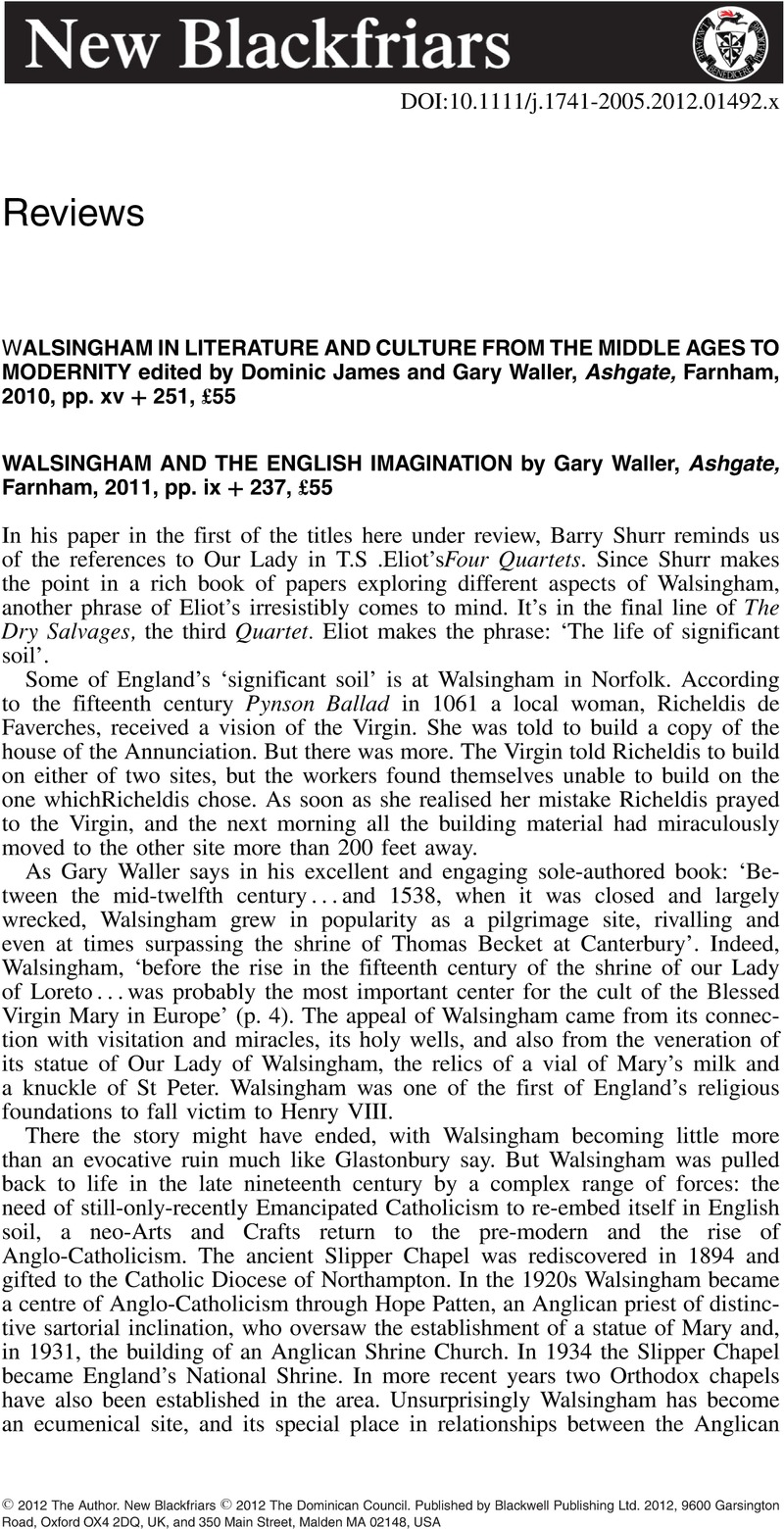No CrossRef data available.
Article contents
Walsingham in Literature and Culture From the Middle Ages to Modernity edited by Dominic James and Gary Waller, Ashgate, Farnham, 2010, pp. xv + 251, £55 - Walsingham and the English Imagination by Gary Waller, Ashgate, Farnham, 2011, pp. ix + 237, £55
Review products
Walsingham in Literature and Culture From the Middle Ages to Modernity edited by Dominic James and Gary Waller, Ashgate, Farnham, 2010, pp. xv + 251, £55
Walsingham and the English Imagination by Gary Waller, Ashgate, Farnham, 2011, pp. ix + 237, £55
Published online by Cambridge University Press: 01 January 2024
Abstract
An abstract is not available for this content so a preview has been provided. Please use the Get access link above for information on how to access this content.

- Type
- Reviews
- Information
- Copyright
- Copyright © 2012 The Author. New Blackfriars


